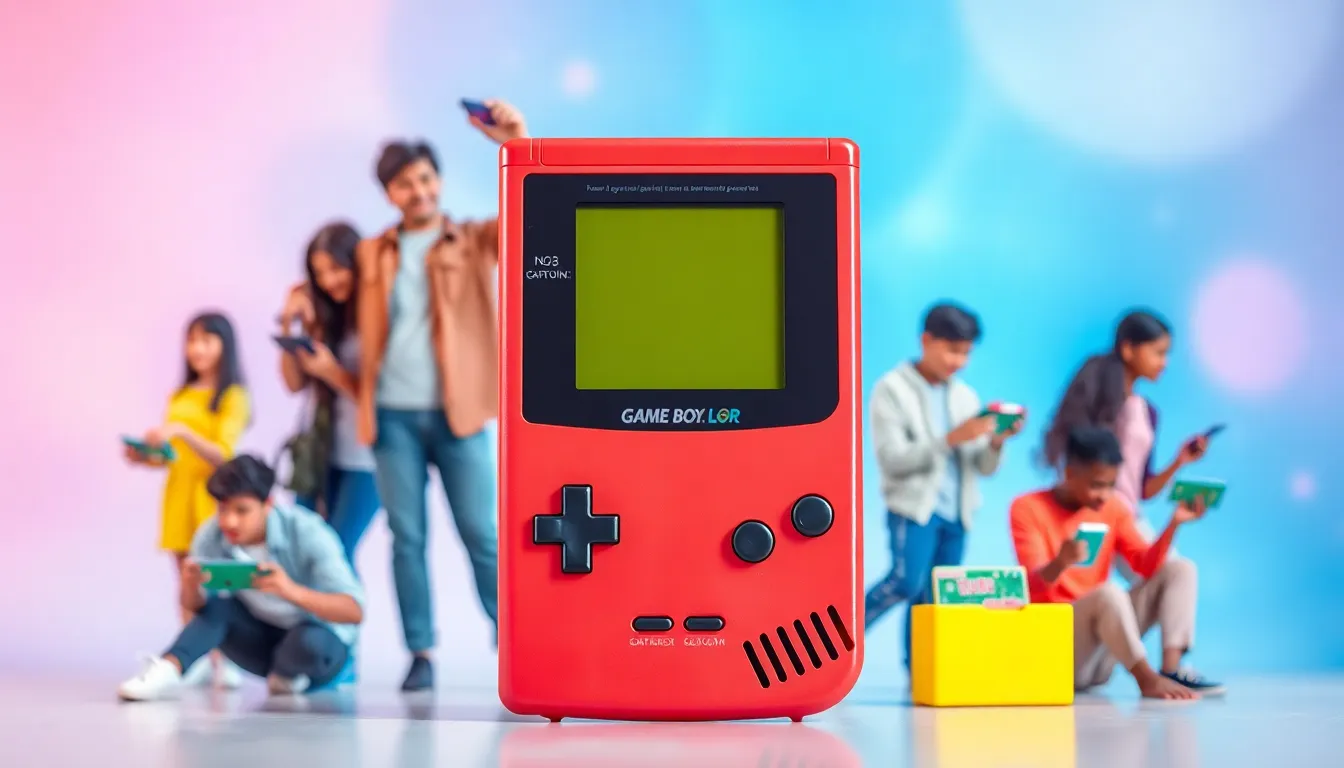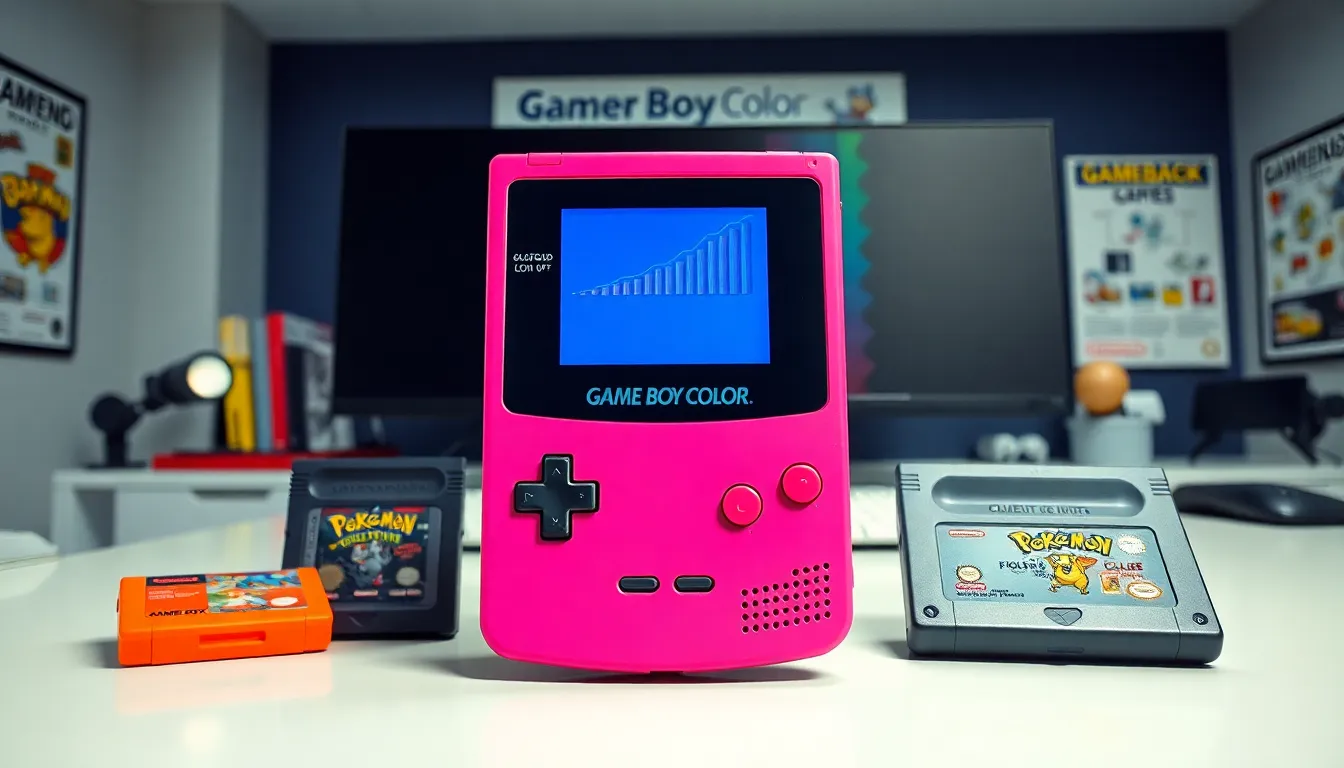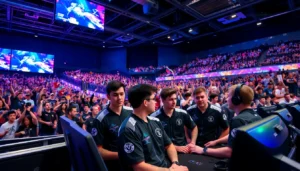Table of Contents
TogglePicture this: it’s 1998, and you’re a kid in a world where video games are still mostly gray and pixelated. Suddenly, a little device that could only be described as ‘a handheld rainbow’ bursts onto the scene. The Game Boy Color didn’t just add color to the gaming landscape: it changed everything. With bright graphics, backward compatibility, and a library of games that would make any gamer drool, Nintendo managed to keep the competition on their toes. Buckle up as we jump into the colorful world of the Game Boy Color, exploring its legacy, launch, and impact on the gaming universe.
The Legacy of Handheld Gaming

Overview of the Original Game Boy
In 1989, the original Game Boy set the stage for handheld gaming, casting a long shadow that the industry still grapples with today. With its bulky design and iconic green screen, it became a beloved device for many. The simplicity of Tetris and the adventure of Pokémon captivated millions, firmly establishing Nintendo as the key player in portable gaming. This gray block was not just a gadget: it was a lifeline to millions of pixelated adventures.
Nintendo’s Vision for the Game Boy Color
As the digital world began to evolve, Nintendo recognized the need for a fresh take on the handheld concept. Their vision was clear: a vibrant, user-friendly device that would draw in both new players and nostalgic fans. The Game Boy Color was designed with portability and playability in mind. Nintendo aimed for an affordable device that provided an immersive visual experience without sacrificing the playful charm of its predecessors.
The Announcement and Launch of Game Boy Color
Key Features of the Game Boy Color
Launched in October 1998, the Game Boy Color introduced a new standard in handheld gaming. Dramatic improvements such as a full-color screen brought beloved titles to life like never before. Also, the device retained the handheld’s trademark battery life, allowing players to enjoy hours of gaming without a charge in sight. Innovative features like an infrared communications port opened up a world of possibilities, including multiplayer games and special connectivity options.
Color Display and Graphics Enhancements
With a 160×144 pixel resolution and support for up to 56 colors simultaneously, the Game Boy Color was a visual delight. The pixelated graphics transformed gameplay experiences, making them feel richer and engaging. Who knew that battling for gym badges or navigating dungeons could pop so vibrantly? The leap from monochrome to color was more than just aesthetics: it was a transformation that set the tone for the future of gaming.
Backward Compatibility with Game Boy Games
Nintendo made a decisive move by ensuring the Game Boy Color could play the original Game Boy titles. This backward compatibility meant that players didn’t have to abandon their cherished games, significantly enhancing the device’s launch appeal. Gamers could experience nostalgia while diving into new adventures, making the Game Boy Color an instant hit in the market.
Impact on Game Design and Development
Notable Game Boy Color Titles
The Game Boy Color boasted a vibrant library, breathing new life into classic franchises. Titles like “The Legend of Zelda: Oracle of Seasons” and “Pokémon Gold and Silver” showcased the potential of the device, combining colorful graphics with captivating gameplay. These games not only captured the imagination of young players but also pushed the boundaries of handheld gaming. They inspired game developers to think creatively about how color could enhance storytelling and gameplay mechanics.
The Role of Game Developers in Game Boy Color Success
Game developers embraced the Game Boy Color with open arms. Recognizing the platform’s capabilities, they crafted games that leveraged its technological advancements. This sparked a renaissance in handheld game design, introducing innovative mechanics and engaging narratives. Developers competed to produce visually stunning and playable titles, helping to cement the Game Boy Color’s place in the hearts of gamers everywhere.
Market Performance and Sales Figures
Consumer Reception and Critical Acclaim
Upon release, the Game Boy Color quickly garnered rave reviews from both consumers and critics. Sales figures soared, within a few short months, Nintendo sold millions of units worldwide. The combination of portability, vibrant graphics, and a retro feel struck a chord with gamers eager for nostalgia wrapped in new experiences. Nintendo’s marketing strategy emphasized the device’s versatility, showcasing its appeal to both seasoned gamers and newcomers alike. The overwhelming positive reception not only propelled sales but also solidified the Game Boy Color as a must-have gadget in the late ’90s.
Long-Term Cultural Impact
The Game Boy’s Legacy in Modern Gaming
The introduction of the Game Boy Color left an indelible mark on the gaming landscape. It set a precedent for future handheld devices, inspiring companies to innovate and develop advanced features for their systems. The fusion of fun, accessibility, and vibrant graphics paved the way for future consoles and handhelds that continue to dominate the market today. Also, the cultural references to the Game Boy Color persist in gaming communities, serving as a reminder of how far technology has come. Many consider it not just a device but a symbol of an era defined by gaming joy, imagination, and creativity.




